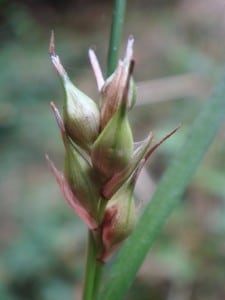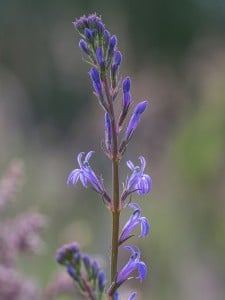When I was born in the 1970s there were twice as many species on the planet. It’s a bleak statistic, and when I heard this, it changed the way I thought about extinction. When I learned about biodiversity loss at school and university, it had always been framed as a post Second World War event that stemmed from the era of agricultural intensification and DDT. It therefore felt like something we could largely blame on our parents. But the statistic mentioned above, as alliterated so well in successive State of Nature reports, shows it’s not just our parents’ fault – it’s also ours.
The Species Recovery Trust was formed as a reaction. We decided to take a host of ‘on the edge of extinction species’ – that we knew would be a challenge to conserve but not impossible – and save them.
We now work on over 30 species. We are currently in our seventh year and many of them, we believe, are slowly moving in the right direction. Here is a story about two of them:
Starved Wood-sedge (Carex depauperata)

I started working on the plant 13 years ago, when I was employed by Plantlife, and it was one of the key species we formed The Species Recovery Trust around. Every year a small band of us has cut back bramble and coppiced hazel, and over the last decade we have re-introduced plants to two of their lost sites in Surrey and Dorset. There are now over 200 plants in the wild, with a large holding of seed in the Millennium Seedbank and further ex-site backup populations.
Heath Lobelia (Lobelia urens)

To our delight in early 2019 we spotted a few rosettes of baby plants, and by the end of the year over 700 plants were flowering on the site, being attended by a host of bees and hoverflies and turning whole swathes of ground purple. We still have a way to go to sustain the population, but this is hopefully the start of a huge recovery!
We remain hugely optimistic that species can be saved on a shoestring budget. Yes, we will continue to lose species globally. But across the world if enough people take enough small steps to stop this happening, then The Species Recovery Trust believes we can radically reduce the scale of this loss.
More information on these species and our work can be found at www.speciesrecoverytrust.org.uk
Dominic Price is the founder and director of The Species Recovery Trust.


